Ever wonder about the setting point for marmalade? Or what temperature do you actually have to boil marmalade to? I investigated how the temperature affects marmalade set and I was really surprised by the results. Check it out!
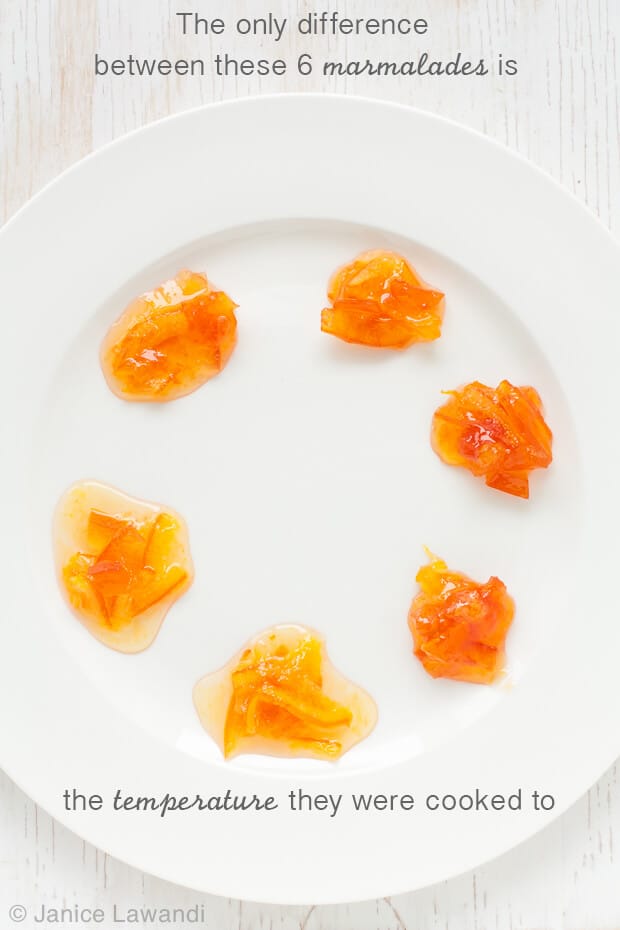
Jump to:
- How do you know when marmalade is set?
- How long does marmalade take to set?
- Experiment to compare cooking temperature to marmalade set
- What is the setting temperature for marmalade (also known as marmalade setting point)?
- Do you need to add pectin when making marmalade?
- Cookbooks on Preserves
- Achieving the perfect texture and set: troubleshooting marmalade
- Conclusion
- Further reading
I cannot stand recipes that suggest that I cook my jam to the "desired consistency" or until it "passes the wrinkle plate test". Say what? How do you know when marmalade is cooked enough?
Let's be honest. If you are not a jam and marmalade expert and if you don't make preserves very often, you will probably lack the experience to see the visual cues of the perfect set. I know that I can't always tell!
I hate guessing games and, as you know, I love to measure everything. And that is how the marmalade temperature experiment was born.
Once you understand the jam setting point applies to marmalade too, your jam-making will get a lot easier!
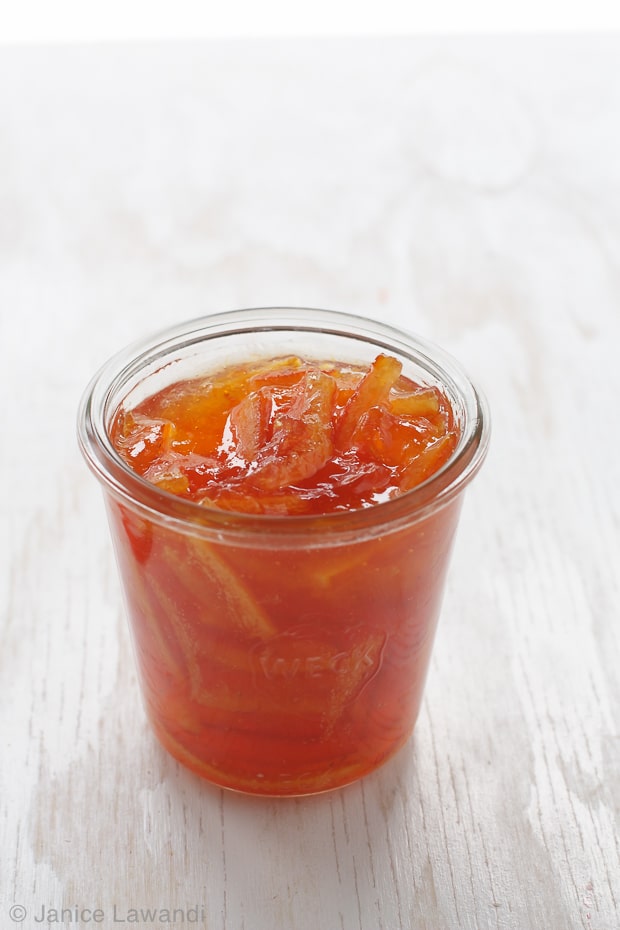
How do you know when marmalade is set?
You have three basic options for determining if your marmalade has cooked enough and will set properly after cooling:
- the bubbles: when the marmalade first comes to a boil, the bubbles are quite volatile, they form and pop almost instantaneously, whereas when the marmalade has thickened enough, the bubbles will be more stable and resemble blinking fish eyes. The visual cues are hard to see for beginners so if you are learning to make marmalade and jams, I recommend you observe the changes in the bubbles as you go, but you should rely on other methods to decide when your marmalade has reached the setting point.
- the wrinkle plate test: freeze a few small saucer plates in your freezer overnight. When you think your marmalade is cooked enough, retrieve a saucer from the freezer and place a dollop of hot marmalade on the plate. Put it back in the freezer for 1 minute, then take it out and push the dollop with your finger: if the dollop wrinkles nicely, your marmalade is probably done, if it's still too fluid to wrinkle, keep cooking.
- the temperature: measure the temperature with a candy thermometer. You want to cook marmalade to somewhere in the range of 217ºF to 221ºF, depending on how fluid or thick you want it. Don't overcook your marmalade because the peel will become chewy and the sugar will caramelize, so be careful how high you push the temperature before you stop cooking.
There’s one caveat when it comes to using temperature: you need to pay attention to altitude! If you are making marmalade above sea level (like in the Rockies), the boiling point of water will be lower, which means the setting temperature will be lower too! The setting point of 220 °F is for marmalade-making at sea level.
How long does marmalade take to set?
In general, once you achieve the right consistency according to your tests and then you have canned your marmalade in jars using a water bath method, you must set the sealed jars aside to cool and it will take 24 to 48 hours for the marmalade to thicken and achieve the final set.
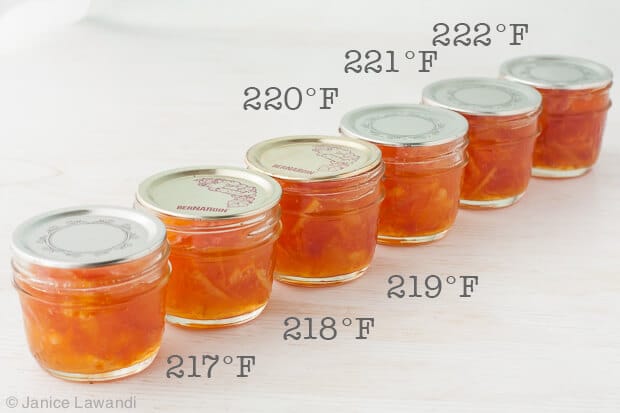
Experiment to compare cooking temperature to marmalade set
I cooked up a batch of three fruit marmalade, using the whole fruit method (no pectin). I measured the temperature as the marmalade bubbled away with an instant read thermometer, the Thermapen which is very fast at registering temperatures and temperature changes, but a probe thermometer with a longer cable like the ChefAlarm would be better because then you don't have to hold it with your hands, which would be much less dangerous to use than my hand-held setup.
I took samples every degree, starting at 217°F and all the way up to 222°F. I chose this range because most of the recipes I perused recommended cooking to somewhere in that range.
As the marmalade boiled and I sampled away, I honestly thought my experiment was a flop. I could not have been more mistaken. Behold, the results!
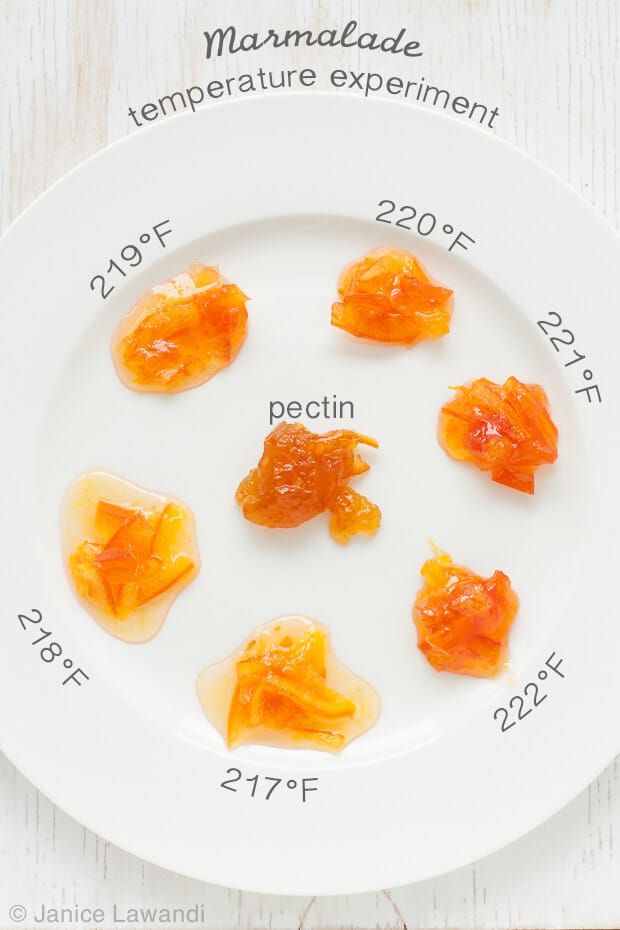
What is the setting temperature for marmalade (also known as marmalade setting point)?
It turns out there is a significant difference between marmalade cooked to 217°F and marmalade cooked to 220°F. Generally, the setting point of marmalade is 222ºF (which comes out to about 105ºC). Cooked to 220ºF, marmalade will be very thick and will set properly once cooled. But some people don't like to cook marmalade that much and prefer a looser set, others prefer to go a little higher, up to 222ºF. That's entirely up to you.
Here's the impact of cooking temperature on marmalade set:
- marmalade cooked to the lower end of the range (217–218°F or 103ºC) has a bright citrus flavour like fresh citrus fruit, but it is more on the watery side of set. The peel is very tender. Marmalade cooked to this temperature dribbles off your toast and leaves a trail in your kitchen or on your keyboard, if you are like me, doing chores while eating marmalade on toast in the morning, without a plate to catch the drips. Delicious, but drippy.
- marmalade cooked to the middle of the range (219°F or 104ºC) is not as drippy, but not overly set. The flavour is still bright and the peel is tender, but the preserve is just a touch thicker.
- marmalade cooked to the upper end of the range (220–221°F or 105ºC) is set just right for me: 220°F is considered the setting point of jam, also known as the gelling point, and this is where things get really interesting. The marmalade is much thicker, but with a touch of dribble to it, the peel is firmer, and the flavour is completely different. The citrus flavour is still there, but it's not as bright. The caramel undertone is coming through and there's a bit of a bitter orange flavour that lingers.
- marmalade cooked to the setting point, 222°F (105.5ºC), is chewy and very thick: this is the upper limit, in my opinion, as beyond this point, the peel gets really, really chewy. At 222°F, the peel is a "nice" chewy. Past 222°F (106ºC), the peel is bordering on tough, and not so pleasant.
Do you need to add pectin when making marmalade?
Seville oranges have the most pectin, so a batch of Seville orange marmalade definitely does not require the addition of pectin. But that being said, citrus fruit vary as does their pectin content. As we can see above with my temperature experiment, the marmalade set has a lot to do with the concentration of sugar and the removal of water, and not as much to do with the pectin content.
If we compare a dollop of pectin-set orange marmalade from the store to homemade marmalade with no extra pectin added, you will notice the pectin-set marmalade is more jellied, seemingly dryer. The store-bought marmalade with pectin definitely doesn't have my favourite texture. It smears funnily on toast, and I found the jiggle of the pectin-set marmalade unpleasant, and a little odd.
Cookbooks on Preserves
If you are interested in simple recipes and techniques for making preserves, like this marmalade, check out Camilla Wynne's books on preserving:
- Preservation Society Home Preserves (available on Amazon in English), and it's also in her book Les Conserves Selon Camilla (available on Amazon in French)
- Jam Bakes (available on Amazon), which is dedicated to making preserves and baking with them too!
I used both these books to research this recipe and follow Camilla Wynne's methods closely as she taught me how to make Seville orange marmalade years ago. Highly recommend!
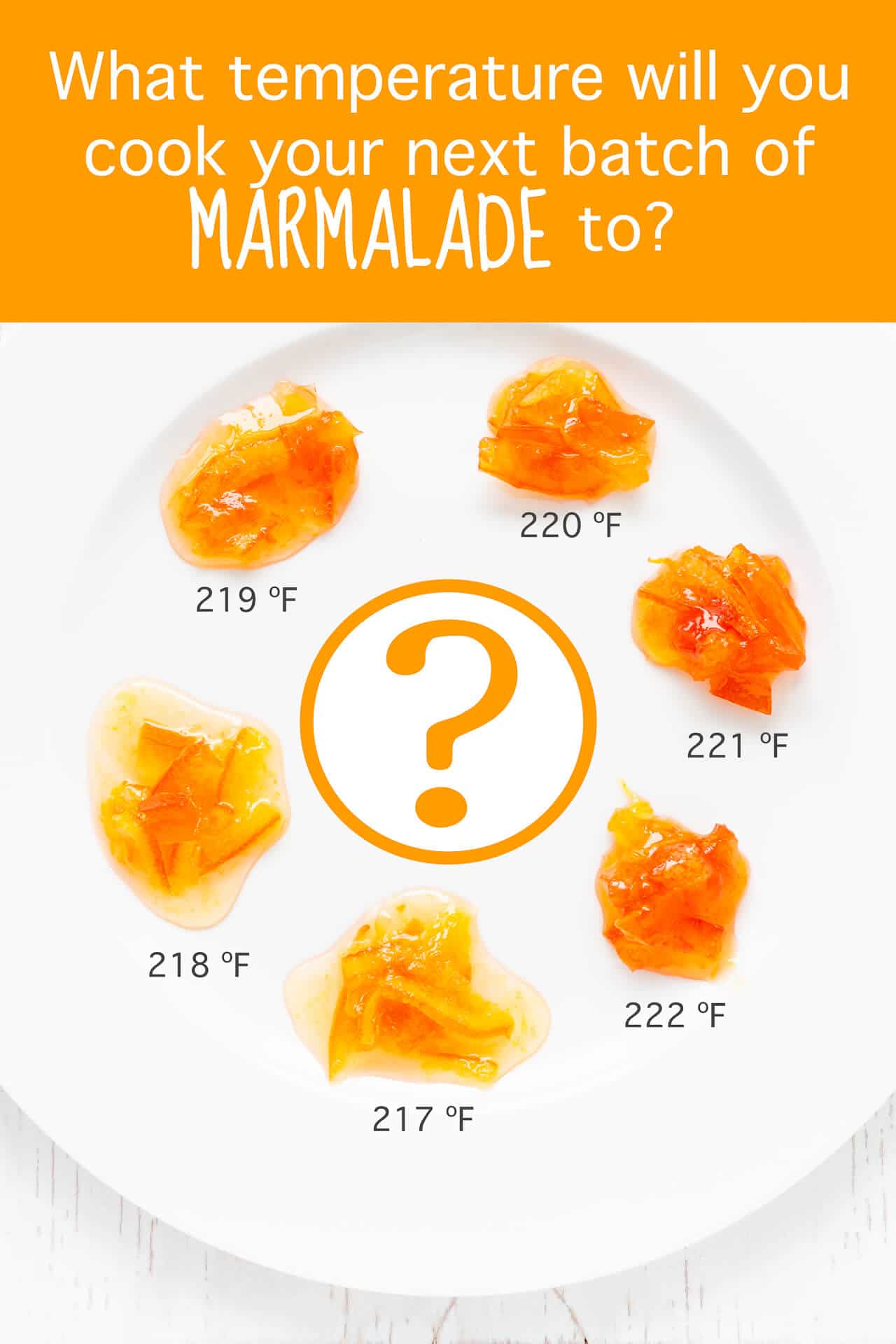
Achieving the perfect texture and set: troubleshooting marmalade
Is your homemade marmalade not setting or is the marmalade too runny?
After your batch of marmalade is canned and left for 2 days to cool and achieve its final set, if you open your first jar and find that the marmalade is runny, it means that you didn't cook the marmalade for long enough or to a high enough temperature. Your batch of marmalade contains too much water still.
How can I fix runny marmalade?
You have two choices to fix runny marmalade if it's not setting properly:
- Live with the runny marmalade and enjoy it despite its flaws: Spread it liberally on toast or better yet, spoon it on vanilla ice cream. Serve it with cake as a sauce.
- Reboil it: open up all the jars of marmalade, combine them in a pot on the stove, and cook it again up to 220ºF. You will have to go through the process of sterilizing the jars again and canning the marmalade in the sterilized jars in a water bath.
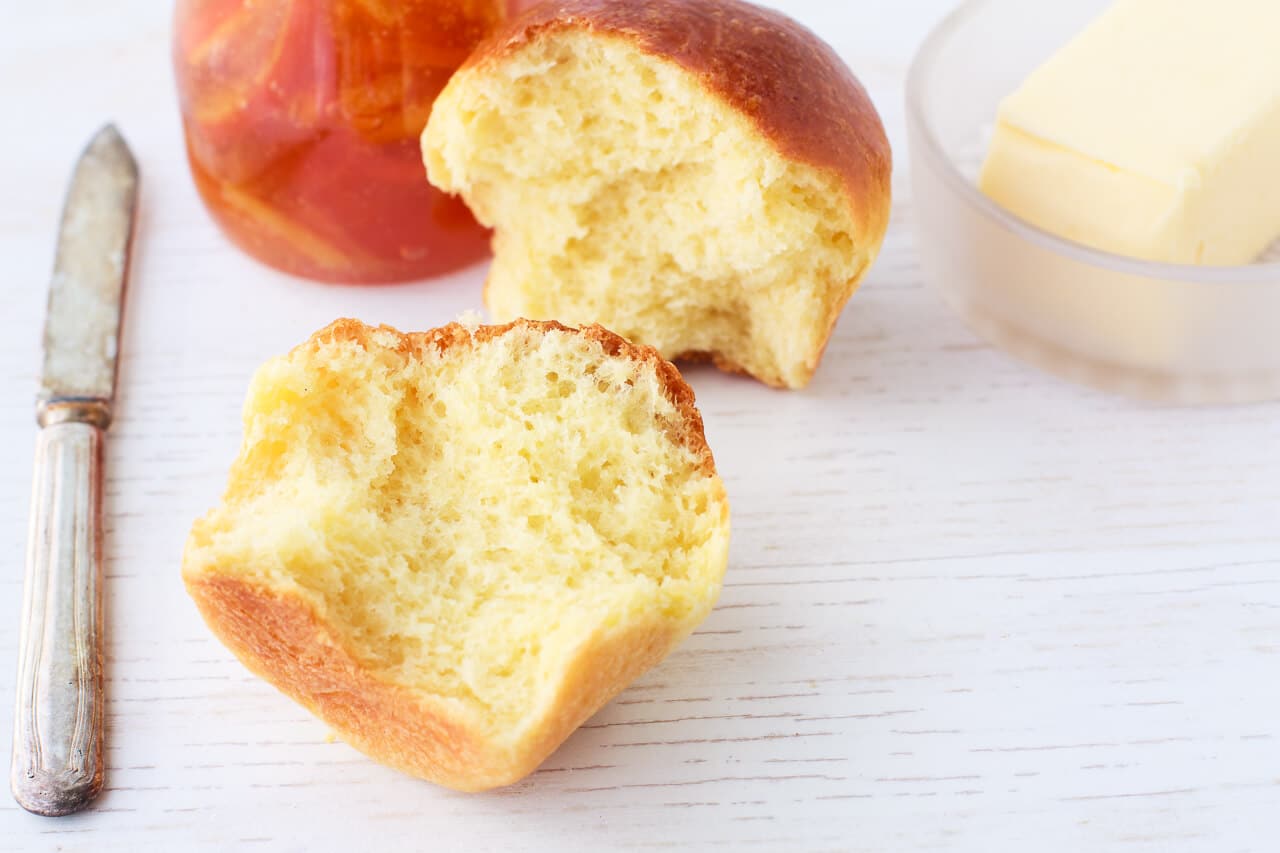
Is your homemade marmalade too thick and chewy? It's overcooked!
As I mentioned, you can save and fix a marmalade that doesn't set properly because it's undercooked by reheating the preserve, bringing it back up to a boil and cooking to 220ºF–222ºF before transferring to sterilized jars and sealing. On the other hand, if you've overcooked a batch of marmalade, there's not much you can do.
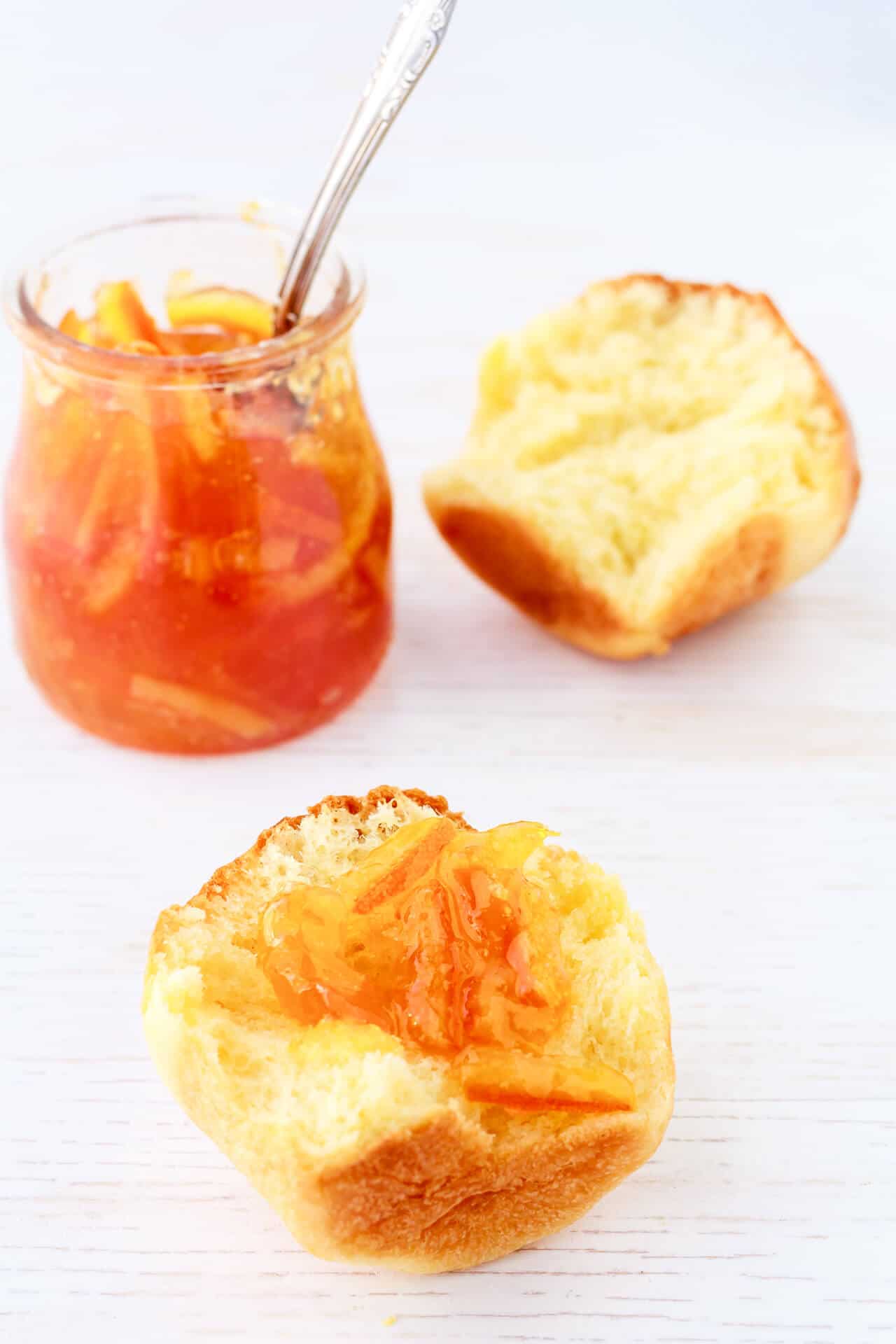
Overcooked marmalade has a few characteristics: chewy, tough citrus peel, possibly rubbery and a thick texture verging on dry. I have been guilty of overcooking marmalade when I was trying to determine the set with a plate test: I left the pot of marmalade on the stove, which continued to boil while I was fiddling with the plate test. In those few minutes, the temperature of the marmalade continued to rise, and I ended up with a rubbery marmalade.
Unfortunately, there's nothing you can do to salvage a batch of overcooked marmalade. Of course, you can still eat overcooked marmalade and learn from this mistake. Remember to pull the pan off the heat while you determine if you've achieved the proper set and use an instant-read probe thermometer (like this probe thermometer with a longer cable: the ChefAlarm) to make sure you are able to measure changes in temperature as they happen with little delay!
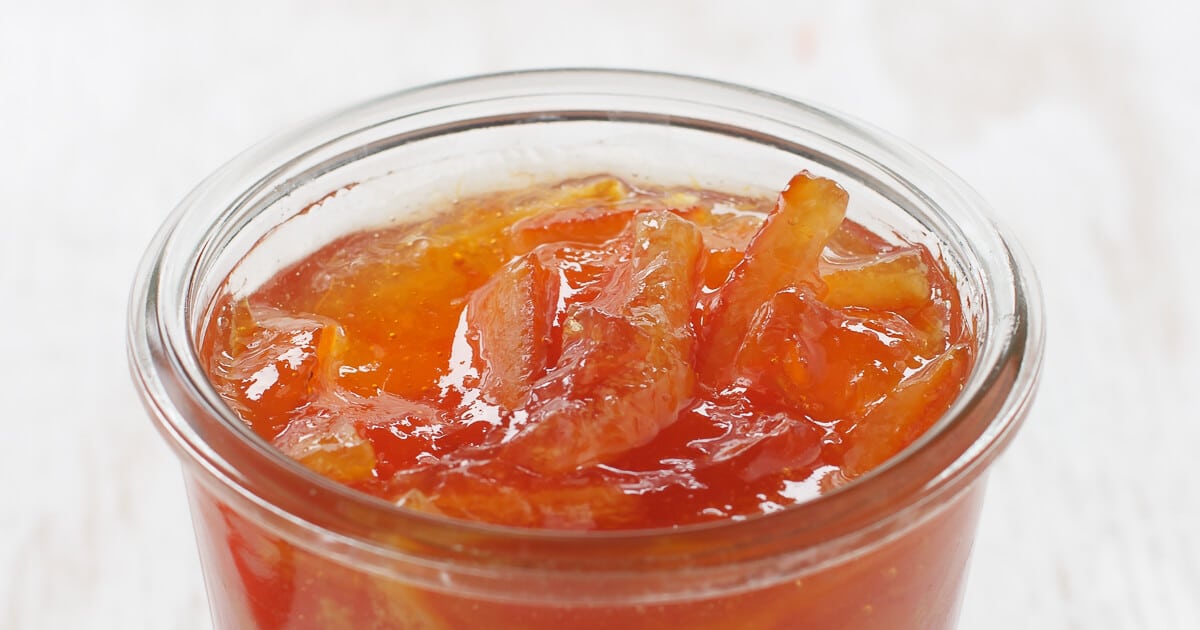
Is your marmalade gritty with sugar crystals? Find out why!
Undissolved sugar can cause crystallization
When making marmalade, each step serves a purpose and though it might seem tedious, it's important to follow the steps carefully. For example, when you mix the chopped fruit with the sugar, it's very important to stir the mixture on a lower heat setting in order to properly dissolve all the sugar.
The goal is to completely dissolve and melt the sugar. If you don't take time to properly dissolve the sugar at the very beginning of jam-making in general, you risk ending up with gritty crystallized marmalade because sugar wants to crystallize and just a tiny amount of undissolved sugar at this stage can ruin an entire batch of marmalade.
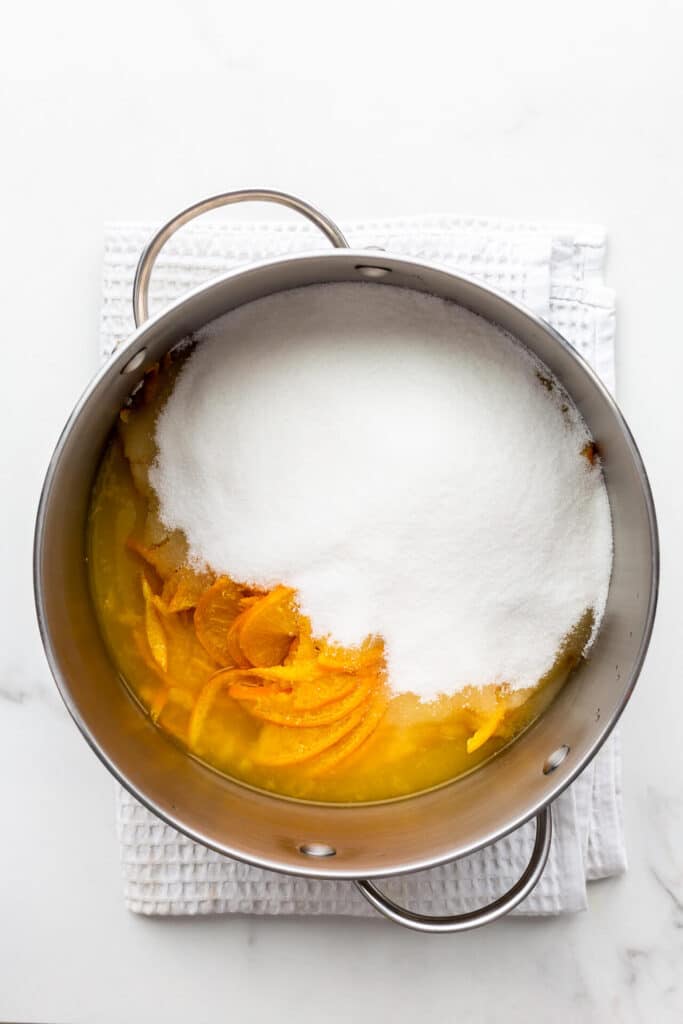
If you didn't properly dissolve the sugar, it's likely that you will notice sugar crystallizing in all the sealed jars of the entire batch of marmalade, before they've been opened. When you open a new jar, you can transfer the contents to a saucepan and heat it on low to warm the marmalade and melt the sugar crystals. Then transfer it back to the jar and store in the fridge.
Some people also suggest briefly microwaving the open jar of marmalade to warm and melt the crystallized sugar.
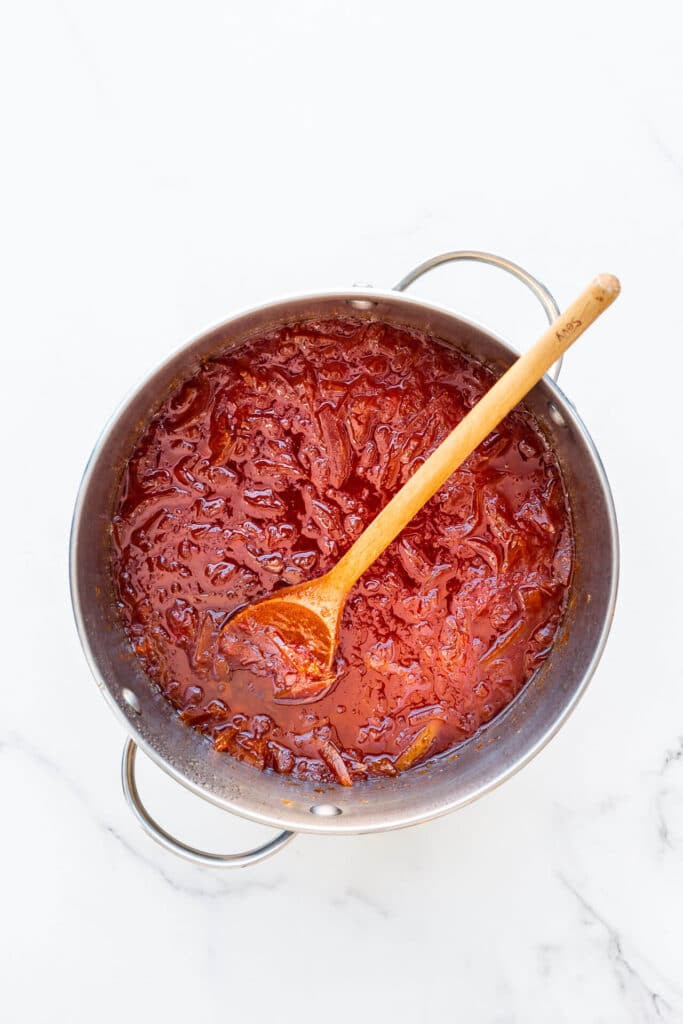
Improperly stored jars can cause crystallization
It's important to properly close open jars of marmalade to avoid evaporation. If you don't close a jar of marmalade (or jam) properly, the surface may evaporate causing crystallization of the sugar. This isn't surprising given how much sugar you use to make preserves. This concentrated sugary spread is likely to crystallize over time, especially if it dries out.
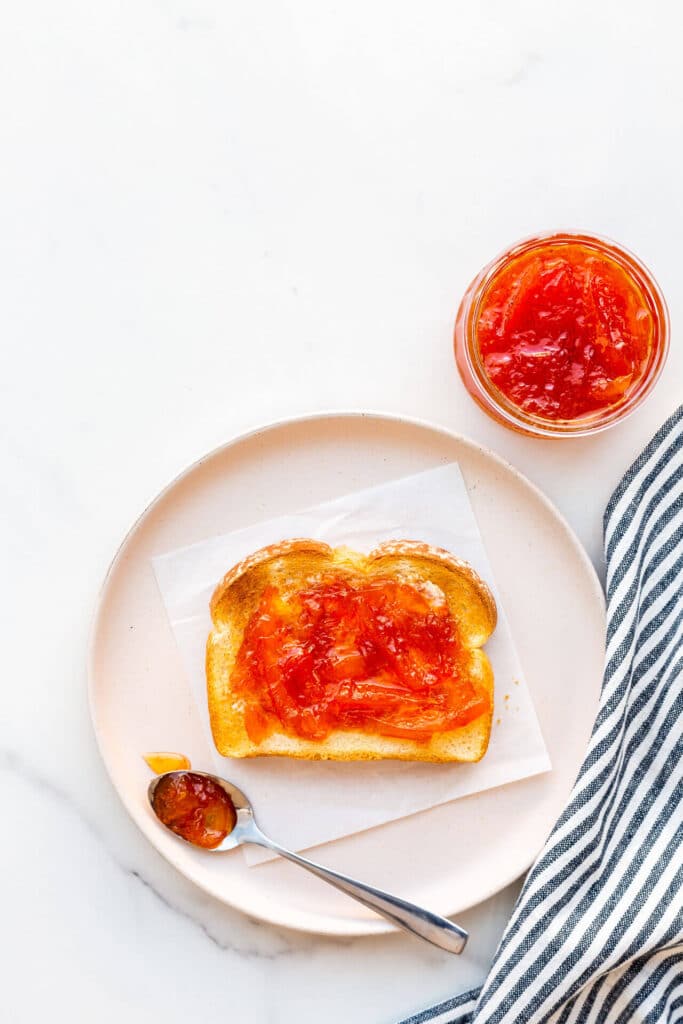
Conclusion
It's honestly a matter of personal preference, but now I hope that you can better understand your options and pick your favourite marmalade set. I don't think there's a right or a wrong. Well... there's definitely no wrong when it comes to marmalade. I love them all. My favourite was definitely above 219°F. Probably 220–221°F. I love the flavour of the marmalade in this range, and I am happy that it will stay put on my toast. Then again, I cooked a batch of marmalade to 222°F and I love how it's a little darker, with a deeper flavour. In a perfect world, I would have a jar from each temperature on hand, at all times, to suit my mood.
Which marmalade do you think you would prefer?
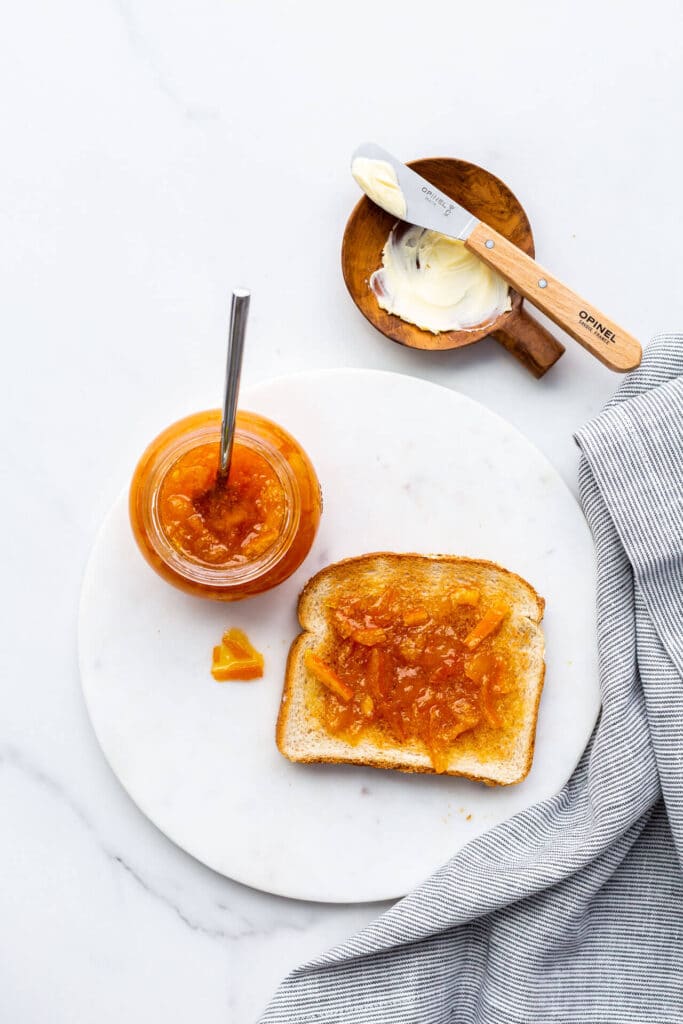
Further reading
- If you want to make marmalade, start with this homemade three fruit marmalade recipe
- This method was also used to make grapefruit marmalade and orange marmalade
- If you prefer finer cut marmalade, try this lime marmalade
- Make marmalade pudding cakes with your homemade marmalade!
- Serve homemade marmalade with homemade croissants (if you have the time)
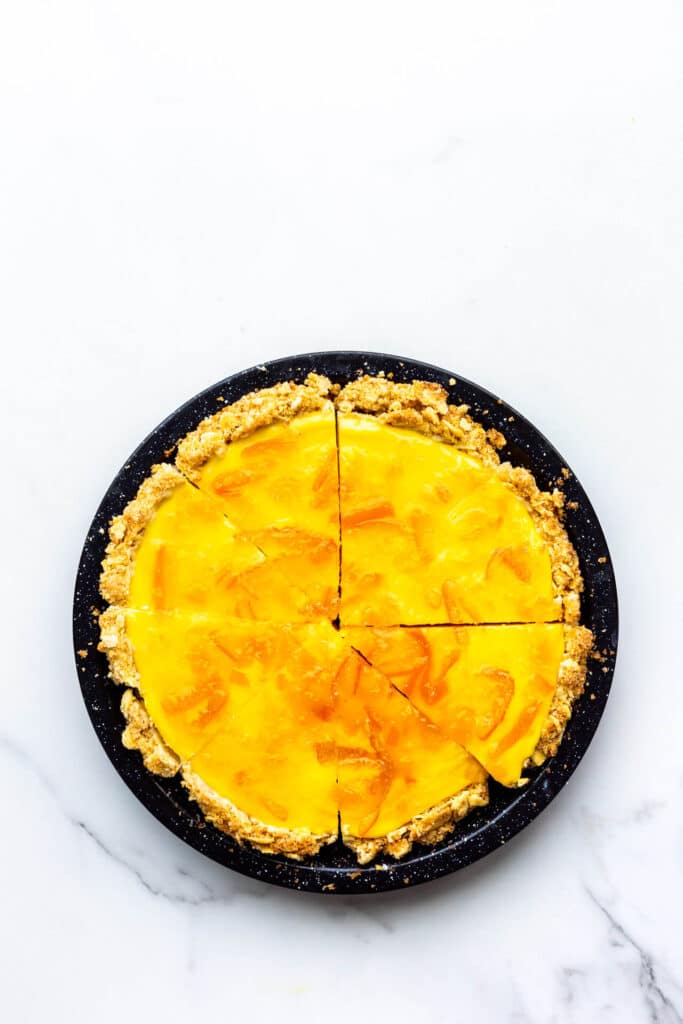
Please note this post contains affiliate links to Amazon. As an Amazon Associate I earn from qualifying purchases. If you buy a product I recommend, I will get a small commission, and the price you have to pay will not change in any way.


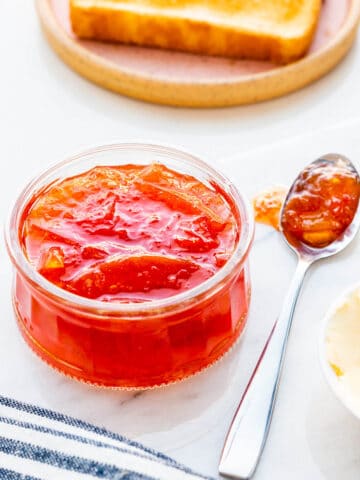
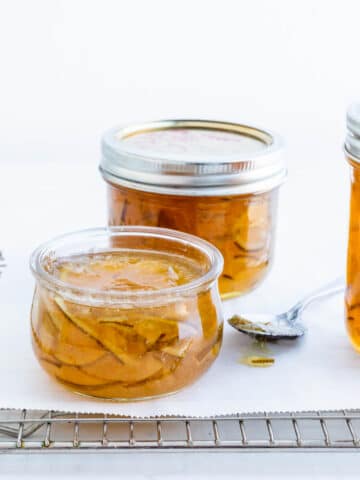
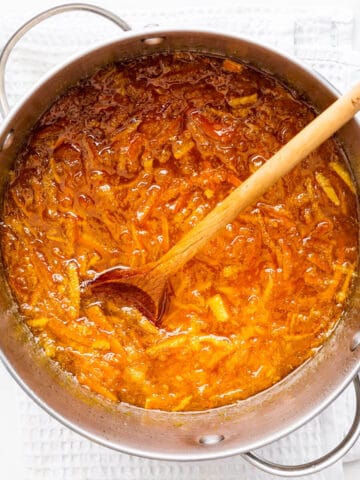
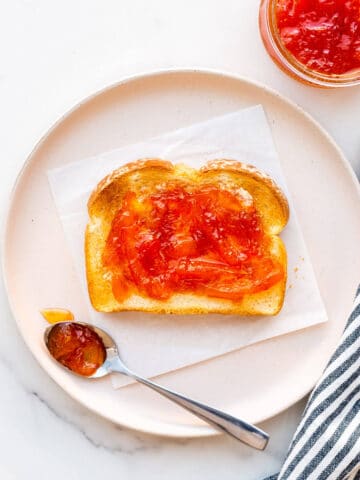
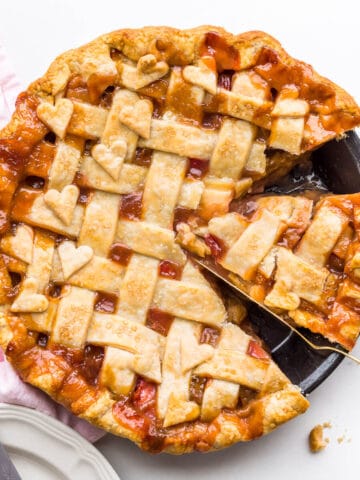
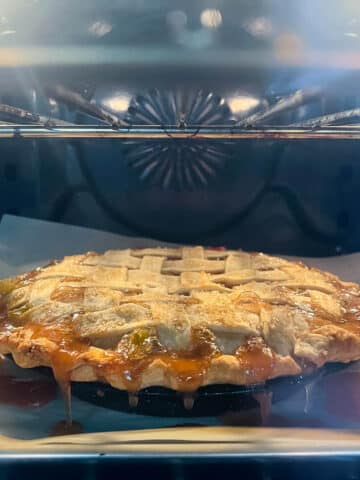
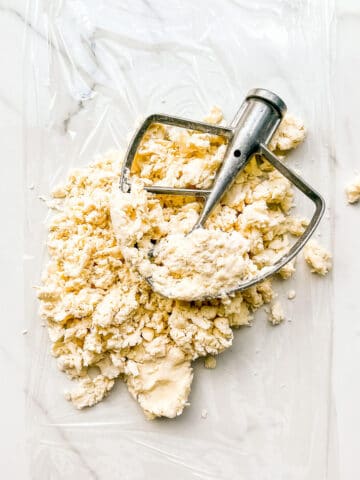
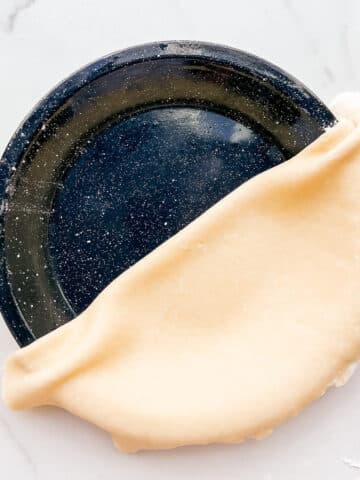
Catherine Bates says
Hello.Thank you for all the useful information.
I would just like to point out that, with reference to your description of bubbles, fish do not blink. Most of them don't even have eyelids.
Janice Lawandi says
I'm glad you found this helpful!
I guess we need to think of cartoon fish, like the fish on the Simpsons 😉
Frans says
Hi. I like your website! Over the years I have made 52 batches of marmelade and I go mostly by the wrinckle test in combination with time of boiling, 33 minutes (because my process is always the same). My question: I would not be able to observe the bubbles as you describe because after 10 minutes there is always a thick layer of foam on the pot and I have to regulate the fire (electrical stove) so as to not let it overflow. How can you see the bubbles?
Kelly says
This was incredibly helpful!! I just so happened to have made 20 jars of runny marmalade the other day and after carefully reading your instruction my husband and I fixed them and learned a lot in the process. Thank you so much for your efforts!